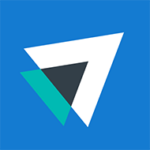The average company wastes nearly 30% of software spend due to administrative sprawl, lack of oversight and misalignment — among other factors. This isn’t just an extra cost for the organization. It’s also a sign of inefficiency, redundancy and lack of visibility. In today’s SaaS-heavy workplaces, software costs can spiral quickly without proactive oversight.
Here’s a five-step framework for reducing SaaS waste, reclaiming tech budget and keeping your tech stack lean and aligned with business goals.
Why SaaS cost optimization matters
As tech stacks grow and budgets tighten, SaaS cost optimization has moved from a nice-to-have to a budget necessity. Here are some reasons it belongs at the top of your strategic priorities:
1. Uncover hidden costs
If you aren’t assessing and optimizing SaaS costs regularly, you’re probably wasting money on tools people don’t use or multiple applications that serve the same purpose. Optimizing SaaS costs helps avoid redundancies and hidden expenses that add up for large companies.
2. Maximize ROI on essential tools
Optimization ensures you’re investing in apps that deliver real business value. By reallocating spend to high-impact software or eliminating apps with similar functionalities, you improve outcomes without increasing budget.
3. Reduce security and compliance risks
Shadow IT isn’t just costly; it’s risky. Employees using unapproved or unvetted tools mean insecure customer or company data, compliance violations and higher risk of malware. Getting a better handle on your SaaS stack means fewer unauthorized tools, tighter data controls and improved governance.
4. Take control of renewals
Regular optimization puts you in control of contract terms, including renegotiating for bulk rates or scaling license levels as your company changes. To avoid surprise renewal dates, negotiate from a position of knowledge and retire tools that no longer serve your teams.
5. Improve the work environment for employees
Bloated lists of SaaS applications and unused or improperly used tools stress out employees. One of the best benefits of SaaS spend optimization is simplifying processes and workflows for employees by reducing the number of apps they need to understand and use effectively. This means more productivity, better collaboration and higher job satisfaction for your employees.
5 steps to optimize SaaS costs
No matter your business’s size, these five strategies for SaaS spend optimization will help you better manage your tech stack costs:
Step 1: Get full visibility into SaaS use
You can’t optimize what you can’t see. Start by mapping your software usage across teams, departments and individuals. Include both purchased tools and those added through shadow IT or self-serve signups.
Of course, self-reporting isn’t always reliable when it comes to understanding what apps or tools your teams are using. People often integrate technology from personal lives — like note-taking apps or time management tools — into work lives, often without noticing it. Many employees may not even recognize they’re using outside tools to do their work. Leveraging a Saas management platform like ActivTrak gives you full visibility into every aspect of SaaS usage across your business.
Step 2: Identify redundant or underused licenses
Many organizations pay for software that’s rarely used or not used at all. Teams may use similar apps with slightly different features out of personal preference, without understanding they’re adding to tech stack bloat. The unnecessary costs of redundant platforms across teams, inactive user licenses and forgotten subscriptions add up fast. And if employees don’t understand how to use a particular tool, they may leave it behind.
Evaluate usage patterns to highlight tools you can consolidate or removed, and adjust licensing tiers accordingly. It’s also important to understand why tools aren’t being used to their full potential. Remember to consider the value of teaching employees how to use underutilized software more effectively.
Step 3: Align SaaS tools with business value
Not every tool adds real business value. Some software is more of a distraction than a useful tool, whether tools add unnecessary steps to workflows, oversaturate employees with notifications or lead to non-work-related activity. Go beyond surface-level usage to understand the outcomes each tool drives and how app performance relates to business outcomes.
Get real-time data on how employees use apps and how that app usage aligns with focus time, collaboration time or distracted time. Prioritize apps that support productivity, collaboration or customer impact and eliminate or replace tools that underdeliver.
Step 4: Foster accountability with transparent insights
Empower department leaders and team managers with clear visibility into their team’s SaaS usage, including usage trends and performance metrics. Transparency fosters more responsible spending and better conversations around renewals, usage and ROI. Some team members may be attached to certain software tools you need to cut for cost efficiency, and managers will need clear reasons to support the organization’s choices.
Ensure you include team leads and department heads from across the organization to understand and account for their contributions to tech spend. This accountability also encourages internal alignment between IT, finance and department heads during procurement or audits. Giving these teams access to the same data and insights ensures everyone is on the same page when it comes to optimizing SaaS costs.
Step 5: Create a repeatable SaaS governance process
Optimization isn’t a one-and-done effort. You’ll need to build a rhythm for reviewing SaaS usage, tracking renewals and revisiting contracts. This means developing regular auditing procedures, clear goal setting and thorough tracking systems. Develop a policy for enacting cost-saving technology measures long-term.
Establish quarterly or bi-annual checkpoints to ensure ongoing alignment between your SaaS spend and evolving business needs. Beyond monitoring tech usage with reliable data, create feedback mechanisms for managers, leaders and employees to express their concerns around technology. This creates more transparency and buy-in across the organization.
Tips for ongoing SaaS cost optimization
Here are some more proven best practices to make your SaaS optimization efforts more effective:
- Centralize SaaS procurement to reduce duplication and improve oversight.
- Set renewal reminders so you never auto-renew contracts without reviewing usage, especially for free trials that lead into paid subscriptions.
- Limit tool sprawl by setting approval workflows for new software requests.
- Standardize categories of tools, such as communication or project management, and cap alternatives.
- Vet vendors thoroughly to streamline approvals and ensure teams use pre-approved apps.
- Negotiate contracts using actual usage data, not just head count.
- Reclaim unused licenses during employee offboarding or team transitions.
- Bundle where possible, as vendors often offer discounts for combining tools or adding new features.
- Review usage quarterly to catch inefficiencies early.
- Include training costs in your tech spend to ensure complicated apps aren’t generating hidden expenses.
- Encourage feedback from employees so you understand which tools are truly useful implement successful changes to the tech stack.
- Consider the human impact changing your tech platform will have and empower managers to get ahead of issues to reduce employee disengagement.
- Use a SaaS management platform like ActivTrak to maintain real-time visibility and control.
Optimize SaaS costs with ActivTrak
Cutting SaaS spend doesn’t have to mean sacrificing efficiency, ruining productivity or disappointing employees. When you drive optimization with data instead of gut feelings, you gain both financial savings and operational clarity.
Streamline your SaaS investments with insight into application sprawl, security gaps and application management overhead with ActivTrak. Correlate apps and tools with real employee productivity across teams and departments to uncover value in your existing tech stack. Explore ActivTrak’s SaaS management solutions to build a leaner, smarter software environment.





